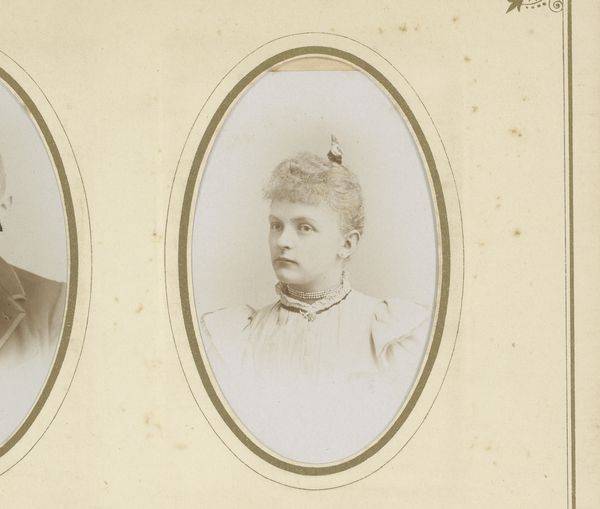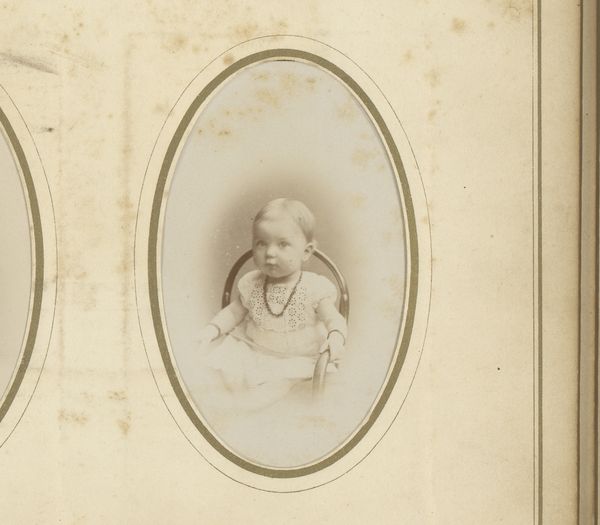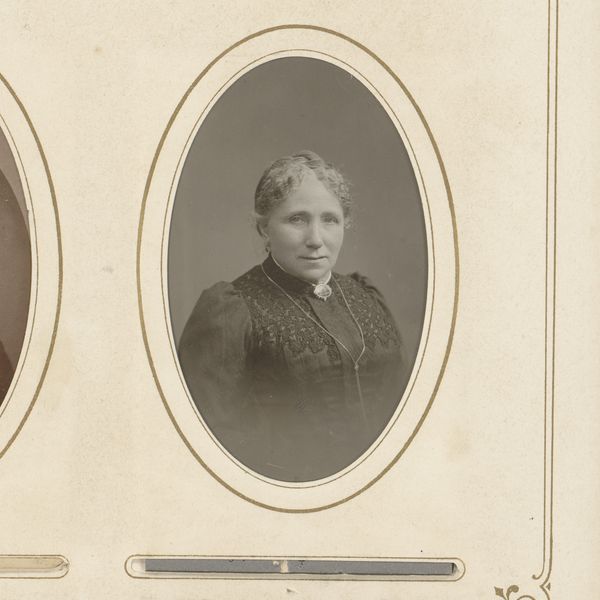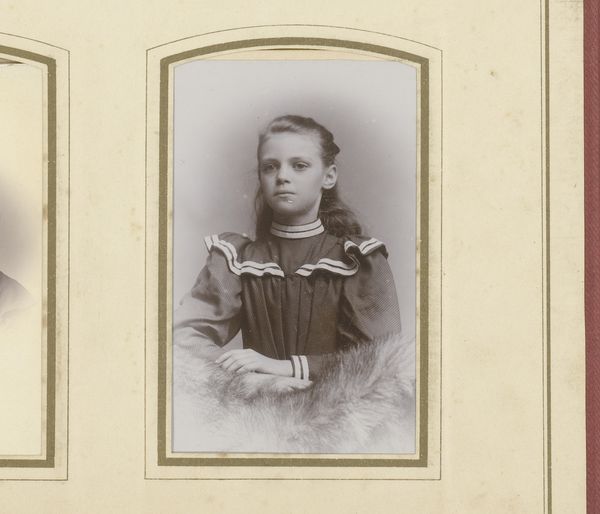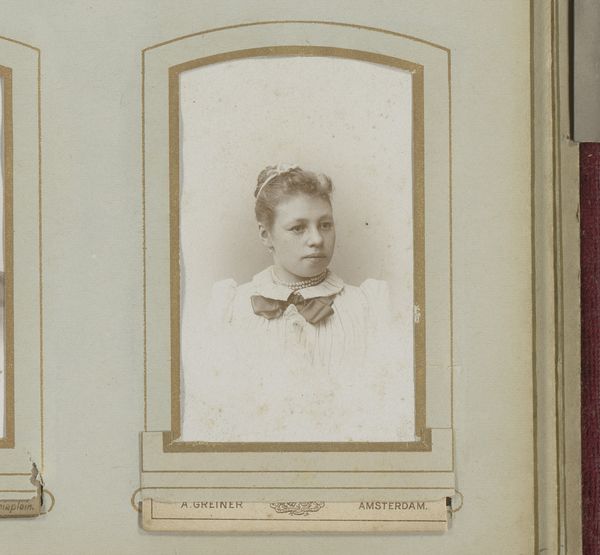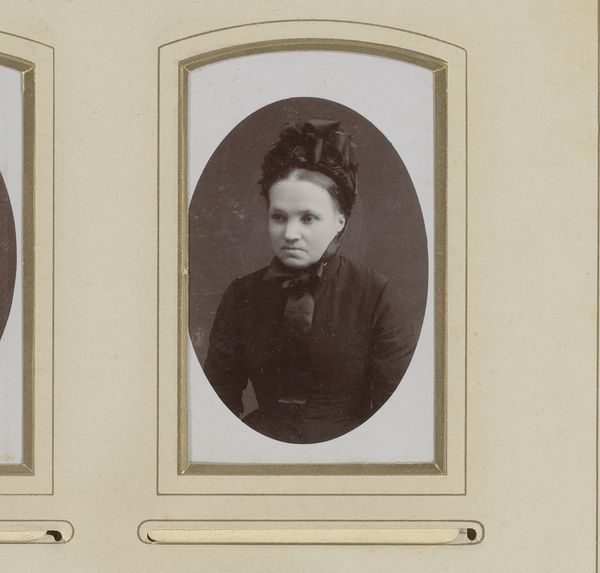
photography
#
portrait
#
photography
#
historical photography
#
19th century
Dimensions: height 85 mm, width 51 mm
Copyright: Rijks Museum: Open Domain
Editor: Here we have a late 19th-century photograph by Jean Baptiste Feilner, titled "Portret van een jonge vrouw"—Portrait of a Young Woman. There's such a stillness about this image. What stories do you think this piece holds? Curator: That stillness is telling, isn’t it? Consider the rise of photography during this period and the shift in portraiture's function. Prior to photography, portraits were largely the domain of the wealthy, used to assert status and power. But photography offered a democratizing effect, allowing a broader segment of society to participate in portraiture. What does that mean for how we understand images of young women like this one? Editor: It feels like the image isn’t just about documenting her appearance. Curator: Exactly. I look at the ornate frame, the girl's slightly averted gaze, the deliberate styling of her hair and clothing—and I wonder about the performance of femininity being captured here. The photograph becomes a tool in shaping and solidifying societal expectations around gender. Can we see it as a form of control but also an avenue for expression, however limited? Editor: That's fascinating. It almost feels like she's consciously posing, aware of the impression she's making. Curator: Precisely! It raises questions about agency and the construction of identity. Is she merely conforming to societal expectations, or is there a subtle act of resistance embedded within the pose itself? Where do you think power lies, within the photographer, the subject, or the viewer? Editor: This makes me think about who gets to control the narrative of these portraits. I originally saw just a simple portrait, but it sounds like it represents a lot more than I thought. Curator: It always does. It reminds us that art doesn’t exist in a vacuum and challenges us to keep digging into the layers of context.
Comments
No comments
Be the first to comment and join the conversation on the ultimate creative platform.

